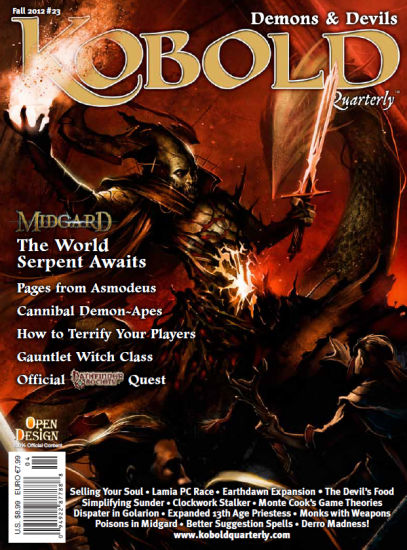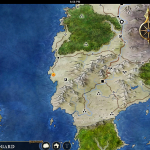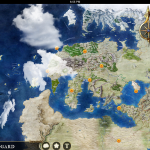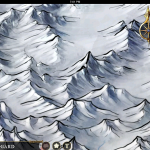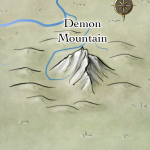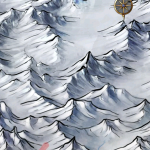An issue of Kobold Quarterly #23 arrived at The Iron Tavern this week, the print and PDF magazine from the Open Design/Kobold Press group. I have been a steady reader of the magazine, but it has been several issues since I have done a review on an issue here. The last review I did was for issue #19.
With Wolfgang Baur at the helm as the Kobold-in-Chief and a complement of staff providing editing and graphic design services the magazine remains a premier periodical for the RPG market. Kobold Quarterly comes with the feel of the Dragon magazine of old with its production quality and articles covering many game systems, including Pathfinder, D&D, AGE, and recently 13th Age. This issue is no different.
Issue #23 is the Autumn 2012 issue and includes an impressive array of contributing authors. Monte Cooke, Ed Greenwood, Wes Schneider, and Wolfgang himself all contributed articles to this Autumn issue along with a host of additional authors. This issue of the magazine is appropriately themed Demons and Devils. A stunning cover by Emile Denis titled “Master of Demon Mountain” further reinforces the theme for this issue.
This issue contains 20 articles ranging from articles geared towards characters, design and DMing, Game Theory along with four feature articles. I will take a brief look at each of the feature articles and then highlight some of the other articles that stood out in my opinion.
Feature Articles
First up is Dispater by Wes Schneider. This article is a continued examination of the lords of Hell in the Golarion campaign setting from Paizo. Dispater is an archdevil who holds a reputation of Hell’s reasonable, rational and honorable overlord. The article goes into great depth about all things concerning this archdevil. Corruptions, Allies and Enemies, Souls and Servants, the Cult of Dispater and more are all covered. The article provides a wealth of information for the GM looking to bring Dispater to life in their campaign.
Next we have Slithering in Moonlight by Marc Radle. This brings the lamia to Pathfinder RPG as a player race. Details of physical description, society, relations, alignment and religion are all covered. Mechanics of playing a lamia including racial traits, a new oracle mystery, and new racial feats are also detailed. If you have players who prefer to play races out of the ordinary or as a GM you want more information for recurring NPCs, the lamia article will provide you with the information you need.
Of the four feature articles, Pages from Asmodeus by Ed Greenwood was my favorite. An article that covers the Vile Black Book we learn of an oversized spellbook with traps within its pages, spells that move about on the pages from one reader to the next and a wealth of new spells. Spellbooks is an area I consider an interesting area to play in. This article hits the mark quite well. Introducing this book into your campaign or using it for a model for other particularly notorious spellbooks in your game will cause players to use caution with new spellbooks they find.
The final feature article is Mechuiti by Adam Roy. Detailing the demon lord Mechuiti in the Midgard Campaign Setting. Lord of apes and cannibals this CR25 creature is not to be trifled with. History, allies and enemies, cults and followers are all described in this article. A full mechanical write-up of this massive beast is also detailed as well as some lowlier minions. Whether you play in the recently released Midgard Campaign Setting or simply “borrow” this write-up for your own, there is something to keep your players on their toes.
Article Highlights
Continuing on into the magazine there are several other gems for GMs and players alike. The article Selling your Soul by Rodrigo Garcia Carmona was an interesting read. It outlines the process of striking a deal with the devil, covering research, summoning and negotiating for the deal. I found it an interesting look at this process that we often write off as “making a deal with the devil”. This article gives the GM some tools to add a little more to that transaction.
Sundering does not come up too often in my games, but the rules in Simplifying Sunder by R.C. Higgins brings an item condition scale that you move up as you attempt to sunder weapons. Also included are some additional modifiers for CMB and CMD stats for the weapons themselves. A good read and if I were to build a character with sundering in mind I would likely ask the GM if we could incorporate the ideas in this article.
Fruits of Friula by Christina Stiles provides more background of the city of Friula in the Midgard Campaign Setting and 14 inks and poisons. I sometimes think I am in the minority when it comes to enjoying reading about mundane or items just a touch above mundane items. This article details poisons adding new descriptions and effects that Friula is infamous for. Rare inks and magical inks are also detailed. This is a strong article that can only add depth to your game as you incorporate these new poisons and inks.
Those are only a few of the articles in the magazine this quarter. Some will be interested in the Living Gods for 13th Age, or Ask the Kobold column or Monte Cook’s Different Kinds of World Building, and more.
The Art
Not to be overlooked is the art and graphic design of the magazine. A long list of artists’ work grace the pages of this magazine. All enhance the magazine really rounding it out and bringing things the articles talk about to life.
Wrap Up
The Autumn issue of Kobold Quarterly is again a stellar offering from the folks over at Open Design/Kobold Press. With articles to inspire, add depth to your game, and more it is well worth picking up. Even the system specific articles are easily ported over to your system of choice.
Kobold Quarterly is available from the Kobold Store in Print+PDF or PDF-only.
Tankard Rating
5 Tankards out of 5 Tankards
Note: The Iron Tavern was provided a review copy of this magazine, though that did not influence the review.

